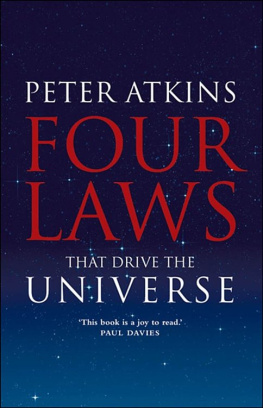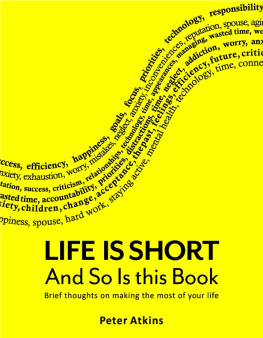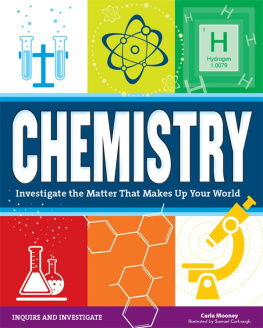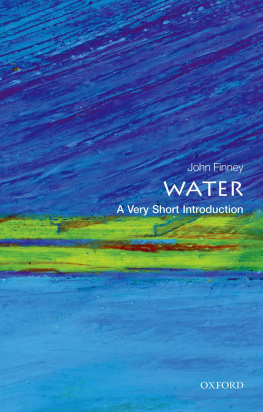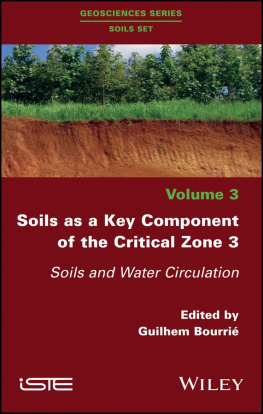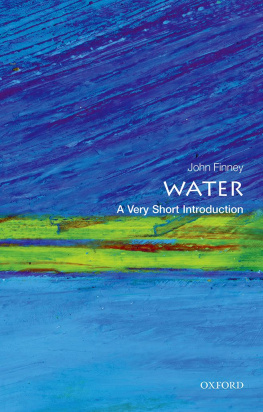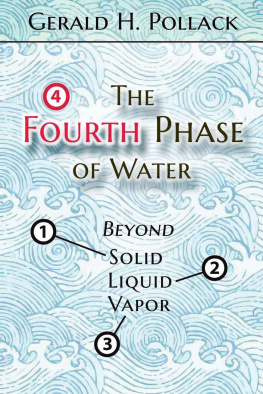REACTIONS
Reactions
THE PRIVATE LIFE OF ATOMS
byPETER ATKINS


Great Clarendon Street, Oxford OX2 6DP
Oxford University Press is a department of the University of Oxford.
It furthers the Universitys objective of excellence in research, scholarship,
and education by publishing worldwide in
Oxford New York
Auckland Cape Town Dar es Salaam Hong Kong
Karachi Kuala Lumpur Madrid Melbourne Mexico City Nairobi
New Delhi Shanghai Taipei Toronto
With offices in
Argentina Austria Brazil Chile Czech Republic France Greece
Guatemala Hungary Italy Japan Poland Portugal Singapore
South Korea Switzerland Thailand Turkey Ukraine Vietnam
Oxford is a registered trade mark of Oxford University Press
in the UK and in certain other countries
Published in the United States
by Oxford University Press Inc., New York
Peter Atkins Limited 2011
The moral rights of the author have been asserted
Database right Oxford University Press (maker)
First published 2011
All rights reserved. No part of this publication maybe reproduced,
stored in a retrieval system, or transmitted, in any form or by any means,
without the prior permission in writing of Oxford University Press,
or as expressly permitted by law, or under terms agreed with the appropriate
reprographics rights organization. Enquiries concerning reproduction
outside the scope of the above should be sent to the Rights Department,
Oxford University Press, at the address above
You must not circulate this book in any other binding or cover
and you must impose the same condition on any acquirer
British Library Cataloguing in Publication Data
Data available
Library of Congress Cataloging in Publication Data
Data available
Printed & bound in China
by C&C Offset Printing Co Ltd
ISBN 978-0-19-969512-6
1 3 5 7 9 10 8 6 4 2
CONTENTS
PREFACE
At the heart of chemistry lie reactions. When chemists shake, stir, and boil their various fluids, they are actually coaxing atoms to form new links, links that result in forms of matter that perhaps have never existed before in the universe. But what is actually going on? What form does that coaxing take? How, using the laboratory equivalents of using shovels and buckets, are individual, invisible, submicroscopic atoms urged into new partnerships?
Chemistry is thought to be an arcane subject, one from which whole populations seems to have recoiled, and one that many think can be understood only by the monkishly initiated. It is thought to be abstract because all its explanations are in terms of scarcely imaginable atoms. But, in fact, once you accept that atoms are real and imaginable as they go about their daily lives, the theatre of chemical change becomes open to visualization.
In this book I have set out to help you understand and visualize the private lives of atoms to that when you look at chemical changeand chemical change is all around and within us, from the falling of a leaf through the digestion of food to the beating of a heart and even the forming of a thought, let alone the great industrial enterprises that manufacture the modern worldyou will be able to imagine what is going on at a molecular scale. In the sections that follow, I invite you to imagine constructing a toolbox of fundamental processes which will enable you to imagine levering one atom away from its partner and encouraging it to join another. Then, with those basic tools in mind, I help you to establish a workshop where you will assemble to tools and bring them to bear on a variety of projects. Finally, I introduce you, in outline but not in detail, to how those workshops are invoked to engineer certain grand projects of construction.
The representation of atoms and molecules is fraught with danger and the representation of the changes they undergo is even more hazardous. I have used drawings of molecules, cartoons really, that chemists typically used to represent their ideas, and have tried to represent various quite complicated processes in a simple and direct manner. Detail and sophistication, if you want them, can come later from other sources: I did not want them to stand in the path of this introduction and encouragement to understanding. My aim is not so much to show you exactly what is going on during a reaction but to invite you into the possibility of thinking about the private lives of atoms in a visual way, to show that chemistry is indeed all about tangible entities with characteristics that are the equivalent of personalities and which, like human personalities, lead them into a variety of combinations.
I wrote and illustrated the text myself. For reasons related to how the illustrations would lie on the page I also needed to set the pages. In that process I had a lot of help from the editorial and design departments of my publishers, who also took my necessarily somewhat amateurish raw efforts and refined them into the current version. I am very grateful to them; having gone through the entire process of constructing a book, except for its actual printing, I can appreciate even more their skills.
PWA
March, 2011;
the International Year of Chemistry
I
THE BASIC TOOLS
I n this section I introduce you to the hammers, spanners, and chisels of chemistry. Here you will meet the basic types of chemical reaction that underlie all the processes around us, the processes of industry, the processes of life and death, and the processes that chemists seek to induce in their bubbling flasks. They are all the basic tools used for the fabrication of different kinds of matter.
The difference between real tools and a chemists tools, is that the latter are exquisitely refined, for they need to shift atoms around. To make a new form of matter, perhaps one that does not exist anywhere else in the universe or simply to satisfy an existing demand, a chemist needs to be able to cajole, induce, tempt, batter, urge individual atoms to leave their current partners in one substance and join those from another substance. The new linkages must also be organized in specific ways, sometimes in assemblages of great intricacy. In this way from raw material new matter emerges.
Of course, chemists do not do this atomic disassembling and reassembling atom by individual atom: they do it by mixing, heating, and stirring their multicoloured liquids, vapours, and solids. Yet beneath these large-scale activities, the myriad atoms of their mixtures are responding one by one. Knowing what happens on the scale of atoms will help you understand what mixing, boiling, and stirring are bringing about. So, in each case I shall show you what is happening to the atoms when a common technique, a basic tool, is employed.
In later shall assemble all these individual basic tools into a metaphorical chemical workshop, and then take you out to reveal construction sites of extraordinary beauty.
A Preliminary Remark
WATER AND FRIENDS
W ater is the most miraculous of fluids. As well as being ubiquitous on Earth and essential for life as we know it, it has remarkable properties which at first sight dont seem to be consistent with its almost laughably simple chemical composition. Each molecule of water consists of a single oxygen atom (O) and two hydrogen atoms (H); its chemical formula is therefore, as just about everyone already knows, H2O.
Next page

